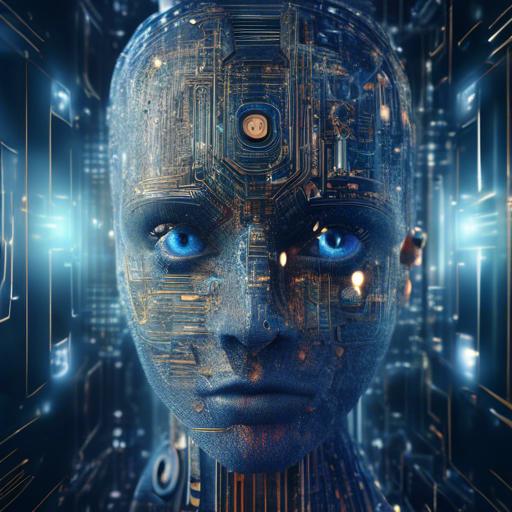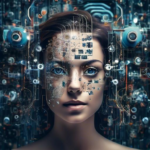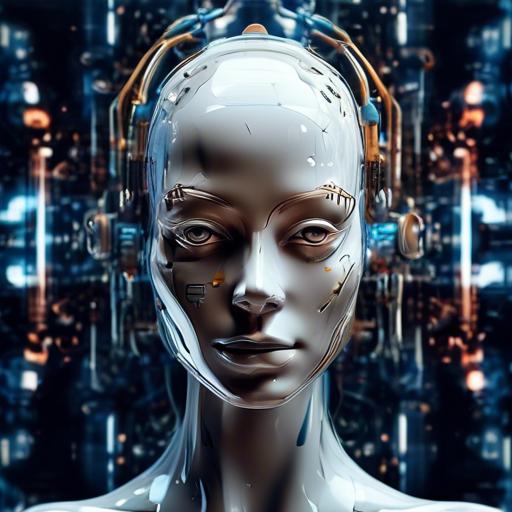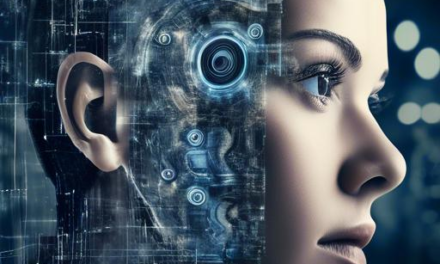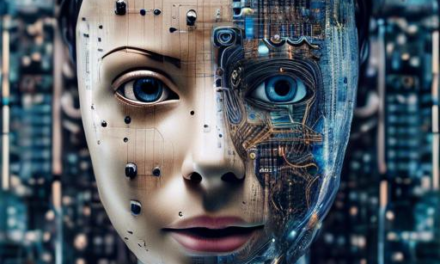In the ever-evolving landscape of technology, artificial intelligence has emerged as a beacon of innovation and capability. One of its most captivating frontiers is AI image generation, a mesmerizing blend of creativity and computation. As the digital brushstrokes of machine learning craft images that blur the lines between reality and imagination, it’s easy to be enchanted by the final masterpieces. But what lies beneath this awe-inspiring artistry? What are the intricate gears and cogs that drive these digital magicians?
In this exploration, we delve into the key components of an AI image generation system, unveiling the sophisticated mechanisms, algorithms, and data intricacies that empower machines to create with an artist’s intuition. Whether you’re a seasoned technologist or a curious mind, join us in uncovering the marvels of this cutting-edge symphony where technology and creativity converge. Prepare to be inspired and supported as we unravel the foundation of these digital dream-weavers.
Table of Contents
- Understanding the Core Algorithms for Image Generation
- Exploring the Magic of Neural Networks
- The Role of Training Data: Quality Over Quantity
- Enhancing Image Quality with Super-Resolution Techniques
- Balancing Creativity and Control: The Importance of User Input
- Ethical Considerations in AI-Generated Imagery
- Ensuring Output Diversity with Advanced Sampling Methods
- Optimizing Performance: Speed vs. Accuracy in Image Generation
- Final Thoughts
Understanding the Core Algorithms for Image Generation
At the heart of any AI image generation system lie the core algorithms that power its creativity. These algorithms serve as the backbone, enabling machines to create, manipulate, and enhance images with a level of sophistication akin to human artists. Here’s a closer look at some of the pivotal algorithms driving this technological marvel.
Generative Adversarial Networks (GANs): Often regarded as the cornerstone of image generation, GANs consist of two neural networks — the generator and the discriminator. The generator creates images, while the discriminator evaluates their quality, pushing the generator to produce increasingly realistic outputs. This dynamic interplay results in the creation of images that can be virtually indistinguishable from real photographs.
- DCGAN: Deep Convolutional GAN, which incorporates convolutional layers for better image generation.
- CycleGAN: Allows unpaired image-to-image translation, making it possible to convert images from one domain to another.
Variational Autoencoders (VAEs): VAEs are another key algorithm used in image generation. Unlike GANs, VAEs encode images into a latent space before decoding them back. This process allows the generation of new images by sampling from the latent space, making VAEs particularly useful in applications requiring controlled variations in generated images.
Neural Style Transfer: This algorithm enables blending the stylistic elements of one image with the content of another. By leveraging convolutional neural networks, neural style transfer allows the creation of images that visually merge the style of a famous painting with the content of a photograph, producing stunning artistic results.
| Algorithm | Primary Usage |
|---|---|
| GANs | Realistic Image Synthesis |
| VAEs | Controlled Image Variations |
| Neural Style Transfer | Artistic Image Creation |
Each of these algorithms has its unique strengths and applications, making them indispensable tools in the AI image generation toolkit. Understanding how they work and where they excel is crucial for anyone looking to harness the power of AI in creative fields. Whether you aim to produce visually stunning art or generate ultra-realistic images, these core algorithms form the foundation of your journey.
Exploring the Magic of Neural Networks
At the heart of an AI image generation system lies the intricate beauty of neural networks, particularly convolutional neural networks (CNNs). These networks are the alchemists of the digital age, turning mundane datasets into stunning visual creations. CNNs are designed to recognize patterns and features in images, emulating the way our own visual cortex processes information. **Layers** are key here — each layer extracts different features, from simple edges in the initial layers to complex textures and shapes in the deeper ones.
The **magic** happens at the intersection of multiple components working together. Below are the essential elements that make up an AI image generation system:
- **Input Layer**: This is where the image data is fed into the network. Each pixel is transformed into numerical data.
- **Convolutional Layers**: These layers apply filters to the input image, capturing different features like edges, textures, and colors.
- **Pooling Layers**: These layers reduce the dimensionality of the feature maps, making the network more computationally efficient while retaining the critical information.
- **Fully Connected Layers**: At the end of the network, these layers transform the 2D feature maps into a 1D vector, which is used for the final image classification or generation task.
| Component | Function | Importance |
|---|---|---|
| Input Layer | Initial image data transformation | High |
| Convolutional Layers | Feature extraction | Very High |
| Pooling Layers | Dimensionality reduction | High |
| Fully Connected Layers | Data transformation for output | Medium |
Equally important are **activation functions** like ReLU (Rectified Linear Unit) and **loss functions** such as Mean Squared Error (MSE). The ReLU function introduces non-linearity, helping the network to understand complex patterns, while the loss function measures how well the network’s outputs match the expected results, guiding the learning process through a series of adjustments known as backpropagation.
With the right configuration and fine-tuning, **neural networks** in AI image generation systems become powerful tools capable of producing photorealistic images, transforming how we perceive and interact with the digital world. Whether you are generating avatars, enhancing photographs, or creating entirely new artwork, understanding these components is crucial to harnessing their full potential.
The Role of Training Data: Quality Over Quantity
In the realm of AI image generation, the axiom “**quality over quantity**” is particularly crucial. While it might seem intuitive to amass vast amounts of data to feed an AI system, the intricate nature of image generation demands a more discerning approach. High-quality, diverse training data not only enhances the system’s ability to generate realistic images but also ensures the model learns nuanced details, improving its overall performance.
**High-Quality Images:** When curating a dataset, prioritize images that are sharp, well-lit, and free of distortions. These attributes help the AI model understand the finer details and textures present in real-world images. A dataset filled with blurry or low-resolution images will train the model to produce subpar outputs, no matter how extensive the collection.
**Diverse Data Sources:** A diverse dataset is paramount to avoid bias and overfitting. This can include images from different geographical locations, weather conditions, and times of day. By exposing the model to a variety of scenarios, it learns to generalize better, creating more versatile and robust outputs.
- Annotations and Metadata: Properly annotated images are gold. Labels, tags, and metadata provide crucial context, enabling the AI to comprehend complex scenes and accurately replicate them.
- Regular Updates: Continuously updating the dataset with new, relevant images keeps the AI system attuned to the latest trends and variations, ensuring its output remains fresh and applicable.
| Quality Measure | Importance |
|---|---|
| Resolution | High |
| Lighting | Critical |
| Diversity | Essential |
Investing time and resources in curating a meticulous dataset pays off multifold. The differences are stark: models trained on carefully curated, high-quality data not only produce visually appealing results but also exhibit greater accuracy and creativity. As the old saying goes, “You reap what you sow.” Proper cultivation of training data is the fertile ground from which groundbreaking AI image generation grows.
Enhancing Image Quality with Super-Resolution Techniques
Super-resolution techniques have revolutionized the field of image processing, enabling us to enhance the quality of images far beyond their original resolution. These techniques leverage sophisticated AI-driven algorithms to upscale images, refine details, and sharpen edges. Here are some key aspects that make super-resolution a pivotal part of AI image generation systems:
- Deep Learning Algorithms: State-of-the-art deep learning models like Generative Adversarial Networks (GANs) and Convolutional Neural Networks (CNNs) play a crucial role. These models are trained on vast datasets, learning to predict high-resolution details for lower-resolution images.
- Self-Supervised Learning: This involves training models on large amounts of data without manual annotations. The models learn to recognize patterns and structures in images, improving their ability to generate higher quality outputs.
- Back-Projection Techniques: Used to refine the upscaled images by iteratively correcting the errors calculated during the image reconstruction process. This method ensures that the final output is closer to what a high-resolution image should look like.
These super-resolution techniques are particularly beneficial in various domains such as medical imaging, security surveillance, and entertainment. For instance, in medical diagnostics, improved image quality leads to more accurate diagnoses, while in surveillance, clearer images can provide better facial recognition capabilities.
“Imagine the possibilities when low-resolution satellite images are enhanced to provide detailed insights into geographical changes or urban development!”
Here’s a brief overview of some popular tools and their unique features utilized in super-resolution:
| Tool | Feature |
|---|---|
| ESRGAN | Enhanced Super-Resolution Generative Adversarial Networks, known for producing photo-realistic images. |
| FSRCNN | Fast Super-Resolution Convolutional Neural Network, optimized for speed and efficiency. |
| VDSR | Very Deep Super-Resolution, capable of handling substantial upscaling effectively. |
Integrating these cutting-edge techniques into your image generation system not only enhances quality but also opens up new avenues for creative and practical applications. The continuous evolution of these algorithms promises even greater advancements in the future, making high-resolution, high-quality image generation more accessible and efficient.
Balancing Creativity and Control: The Importance of User Input
One of the most intricate aspects of AI image generation systems is achieving a delicate balance between creativity and control. Users play a pivotal role in this, driving innovation while providing necessary constraints. **User input** is essential to guide the AI in producing images that not only meet technical specifications but also resonate with the intended audience. Through a variety of user interactions, we can shape the output to strike this balance effectively.
- **Initial Parameters:** Setting initial parameters allows users to define basic aspects such as image size, color palette, and specific elements to be included. This provides a foundation on which the AI builds upon, ensuring the generated images align closely with the user’s vision.
- **Iterative Feedback:** Users can offer feedback at different stages of the generation process. This iterative approach ensures the final product is refined repeatedly, incorporating user preferences into the evolving image.
- **Style Transfer:** By incorporating user-specified styles, the system can adapt artistic elements from one image to another. This fosters a creative output while adhering to the desired aesthetic qualities.
| User Interaction | Purpose | Effect on Final Output |
|---|---|---|
| Initial Parameters | Set basic attributes | Foundation of the image |
| Iterative Feedback | Continuous refinement | Enhanced alignment with user needs |
| Style Transfer | Apply specific artistic styles | Incorporation of desired aesthetics |
Moreover, **customizability** is a crucial factor. Allowing users to manipulate more advanced features—like object placement, background variation, and layer adjustments—offers deeper control. These fine-tuning options empower users to experiment with various configurations and see immediate impacts on the generated images. Customizability ensures that artistically inclined users aren’t confined by rigid system constraints, allowing personal creativity to flourish within a controlled framework.
a robust AI image generation system shouldn’t just consider user input an additional feature but as a central component. The synergy of creative freedom and user-provided constraints fosters an environment where both the AI and its users can coexist harmoniously, producing content that is as innovative as it is controlled.
Ethical Considerations in AI-Generated Imagery
In the realm of AI-generated imagery, navigating the ethical landscape is imperative. The generation of images through artificial intelligence presents unique challenges and responsibilities that must be addressed proactively. **Transparency** in the creation and utilization of AI-generated images is crucial. Creators and consumers alike must have a clear understanding of how these images were produced, including the datasets used for training, ensuring that the information is readily accessible and comprehensible.
**Consent and Privacy** are cornerstones of ethical AI practices. AI systems often derive their capabilities from extensive datasets that may include personal or sensitive information. Ensuring that data used respects individual privacy and has been sourced with explicit consent is non-negotiable. When possible, anonymization measures must be utilized to protect identities and personal data inherent in the training datasets.
Common Ethical Concerns:
| Transparency | Disclosure of methods and datasets used in AI creation. |
| Consent | Ensuring data is sourced with explicit permission. |
| Bias and Fairness | Preventing and correcting biases in AI outputs. |
| Accountability | Holding creators responsible for AI outputs. |
Another critical aspect involves addressing **Bias and Fairness** within AI-generated imagery. These systems can unintentionally perpetuate or even exacerbate societal biases present in their training datasets. It is essential to implement robust monitoring and corrective mechanisms to detect and mitigate any biases, ensuring fair and equitable AI outputs that do not discriminate against or misrepresent any groups.
Lastly, **Accountability** must be a guiding principle in the development and deployment of AI imagery systems. Clear policies and frameworks should be established to ensure that developers and companies are held accountable for the impact of their creations. Identifiable codes of conduct and ethical guidelines should be adhered to, fostering a culture of responsibility and ethical integrity.
- Transparency: Clear communication about AI development processes.
- Privacy: Safeguarding personal data within training datasets.
- Bias Mitigation: Ensuring equality and fairness in AI-generated outputs.
- Accountability: Establishing clear responsibilities and ethical standards.
Ensuring Output Diversity with Advanced Sampling Methods
To achieve a rich variety of outputs in AI image generation, advanced sampling methods play a pivotal role. Simply put, these methods help in ensuring that the images generated are not only high-quality but also diverse, offering a plethora of unique visuals to cater to different needs and preferences.
**Key Advanced Sampling Methods:**
- Stochastic Sampling: This method employs randomness to introduce variations in the output. By allowing for slight randomness in the selection process, stochastic sampling can ensure that the generated images are not too repetitive.
- Temperature Sampling: By adjusting the ‘temperature’ parameter, one can control the diversity of the generated images. A higher temperature means more randomness and variety, while a lower temperature results in more deterministic outputs.
- Nucleus Sampling (Top-p): This technique focuses on limiting the probabilities to the top p cumulative probability mass, effectively filtering out less likely options. It strikes a balance between quality and diversity.
Another fascinating approach is **Beam Search**, which is generally used for sequence generation tasks but has proven advantageous in image generation too. By expanding multiple beams of search space and choosing the most promising paths, beam search can create a set of diverse visuals from which the best can be selected.
Implementing these methods isn’t one-size-fits-all. The choice of technique depends on the specific requirements and the desired level of diversity in the final output. For simpler applications, stochastic sampling might suffice, while more complex needs might benefit from a combination of nucleus sampling and beam search.
| Method | Pros | Cons |
|---|---|---|
| Stochastic Sampling | Easy to implement, Adds slight randomness | Can sometimes produce lower quality images |
| Temperature Sampling | Adjustable randomness, Wide control | Requires careful tuning |
| Nucleus Sampling | Quality control, Less repetitive | Complex to implement |
Ultimately, advanced sampling methods are indispensable tools in the arsenal of AI image generation. They not only ensure that the artwork produced is rich and captivating but also pave the path for groundbreaking creativity and innovation.
Optimizing Performance: Speed vs. Accuracy in Image Generation
When juggling between speed and accuracy in AI image generation, striking the right balance is vital. **Performance optimization** in this context revolves around tuning various elements of your AI system to either accelerate rendering times or enhance the fidelity of the generated images.
One crucial strategy is leveraging **hardware accelerators**, such as GPUs and TPUs. These devices are designed to handle the intensive data processing demands of AI tasks, significantly reducing rendering times without a loss in quality. However, it’s essential to evaluate your specific needs, as the high cost of these accelerators may not be justified if your application doesn’t require super-fast processing.
Another key component is the **network architecture**. Utilizing more advanced and complex architectures like Generative Adversarial Networks (GANs) can yield exceptional accuracy but at the cost of speed. For applications where faster generation times are a priority, simpler architectures or pruning techniques can be applied. These methods reduce the number of parameters within a model, thereby expediting processing but possibly sacrificing some degree of accuracy.
**Training duration** also plays a pivotal role. Extended training times generally result in higher accuracy as models learn and refine their outputs more precisely. However, prolonged training can be resource-intensive. Employing techniques such as transfer learning can mitigate this by leveraging pre-trained models, cutting down both the training time and computational costs.
| Factor | Impact on Speed | Impact on Accuracy |
|---|---|---|
| Hardware Accelerators | High | Neutral |
| Network Architecture | Variable | High |
| Training Duration | Low | High |
**Batch processing** can be a game-changer. By grouping multiple image requests together, your system can process these batches more efficiently compared to handling each individually. **Data augmentation** methods, meanwhile, can enrich your training dataset, enabling the model to achieve higher accuracy without needing extensive additional data collection.
Final Thoughts
the key components of an AI image generation system play a vital role in pushing the boundaries of creativity and innovation. With advancements in technology constantly evolving, these components pave the way for exciting possibilities in the world of artificial intelligence. By understanding and harnessing the power of these components, we can continue to create mesmerizing and thought-provoking visuals that captivate and inspire. Let us embrace these key components and continue to harness the unlimited potential of AI image generation. The future is bright, and the canvas of creativity is endless. Let’s paint a masterpiece together.

